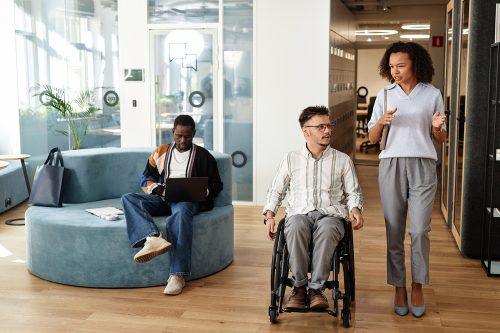In a diverse healthcare environment, cultural competency and disability awareness are not just “nice-to-haves.” They are essential for delivering equitable, ethical, and legally compliant care—especially in a state like Nevada, where 37% of the state’s senior population report having a disability, according to the University of Nevada, Reno Extension. Despite best intentions, many providers unintentionally fall short in these areas. Whether it’s due to outdated assumptions, lack of training, or systemic gaps, the result is the same: patients feel underserved, misunderstood, or excluded. Let’s explore the most common mistakes Nevada healthcare providers make in cultural and disability inclusion—and what your team can do to avoid them.
7 Common Mistakes Nevada Providers Make in Cultural and Disability Inclusion

Assuming “Equal” Means “Inclusive”
Treating all patients the same isn’t always a sign of fairness—it can sometimes mean overlooking unique needs. For example, offering printed English materials to all patients doesn’t support someone with limited English proficiency or low vision.
Better approach: Cultural and Disability Inclusion starts with recognizing and responding to differences. Tailor your communication methods, consent processes, and patient education tools based on language preferences, reading levels, and accessibility needs.
Overlooking Communication Barriers
Language and disability barriers are more common than most providers realize. Yet many facilities still:
Lack interpreter services
Provide inaccessible signage
Use jargon-heavy communication
Don’t ask patients about communication preferences
Better approach: To strengthen Cultural and Disability Inclusion, make it standard practice to ask about preferred communication methods during intake and document them. Ensure staff know how to access qualified interpreters or provide materials in alternative formats (e.g., large print, Braille, plain language).
Failing to Train Staff Regularly
Even the most experienced healthcare professionals can unintentionally make mistakes or harbor unconscious biases. Cultural competency and disability inclusion are not one-time trainings—they require continuous reinforcement.
Better approach: Nevada requires training under NRS 449.103 for providers, and many compliance organizations now offer updated, state-specific modules. Build a recurring training schedule and empower team members to speak up when they notice barriers or exclusion.
Missing the Nuances of Disability Etiquette
From speaking to a patient’s caregiver instead of the patient themselves, to using outdated or offensive terms, small missteps can have big impacts on Cultural and Disability Inclusion.
Common mistakes include:
Talking about rather than to the person
Making assumptions about someone’s abilities
Using language like “wheelchair-bound” instead of “person who uses a wheelchair”
Better approach: Use people-first language, ask rather than assume, and follow the patient’s lead when offering assistance. Respect goes a long way in building trust and supporting true Cultural and Disability Inclusion.
Ignoring Cultural Health Beliefs
Different cultures have different relationships with medicine, pain, mental health, and end-of-life care. Failing to acknowledge these beliefs can lead to non-compliance with treatment, mistrust, or even refusal of care.
For example:
Some patients may rely on herbal remedies alongside prescribed meds.
Others may avoid discussing terminal illness due to cultural norms.
Pain may be underreported in cultures that value stoicism.
Better approach: Ask culturally sensitive questions and be open to integrating a patient’s beliefs into their care plan when safe and appropriate.
Designing Facilities Without Accessibility in Mind
Inclusion isn’t just about communication—it’s also about environmental design. Small physical barriers can create massive obstacles for people with disabilities.
Examples include:
Inaccessible exam tables
No automatic door openers
Lack of wheelchair-friendly paths
Narrow hallways and poorly lit signage
Better approach: Conduct regular accessibility audits. Involve patients with disabilities in testing facility accessibility. Update your layout, signage, and equipment where needed.
Not Complying with Nevada-Specific Requirements
Many providers rely solely on federal standards, but Nevada has its own requirements, which mandates Cultural Competency and Disability Awareness Training for providers in certain healthcare settings.
Better approach: Make sure your training meets Nevada’s legislative requirements, not just federal guidelines. Consider enrolling your team in customized compliance training that covers both state and federal mandates.
The Impact: Why Cultural and Disability Inclusion Matters

Failing to create an inclusive environment doesn’t just affect compliance—it affects care. Patients who feel misunderstood or marginalized are more likely to:
- Miss appointments
- Skip treatments
- Avoid seeking care
- Leave negative reviews
- File legal complaints
In contrast, inclusive practices build:
- Better patient outcomes
- Stronger community trust
- Higher staff morale
- Lower risk of legal action
Final Thoughts: Small Changes, Big Impact
Cultural and disability inclusion isn’t just the right thing to do—it’s smart business, good medicine, and essential to long-term growth. Most mistakes in this area are avoidable with the right awareness, systems, and mindset.
Your team doesn’t need to overhaul everything overnight—but even small improvements in communication, training, and accessibility can ripple out into better care and a more inclusive practice.
Ready to Strengthen Inclusion and Compliance?
American Medical Compliance offers Nevada-specific Cultural Competency and Disability Awareness Training that’s fully online, self-paced, and designed for busy providers. Whether you’re training one person or an entire team, we’ll tailor the program to fit your unique needs.
Ensure compliance. Boost efficiency. Build trust with every patient interaction.
Enroll your team today or request a free, customized course development consultation.
Let’s make healthcare safer, smarter, and more inclusive—together. Click here.



